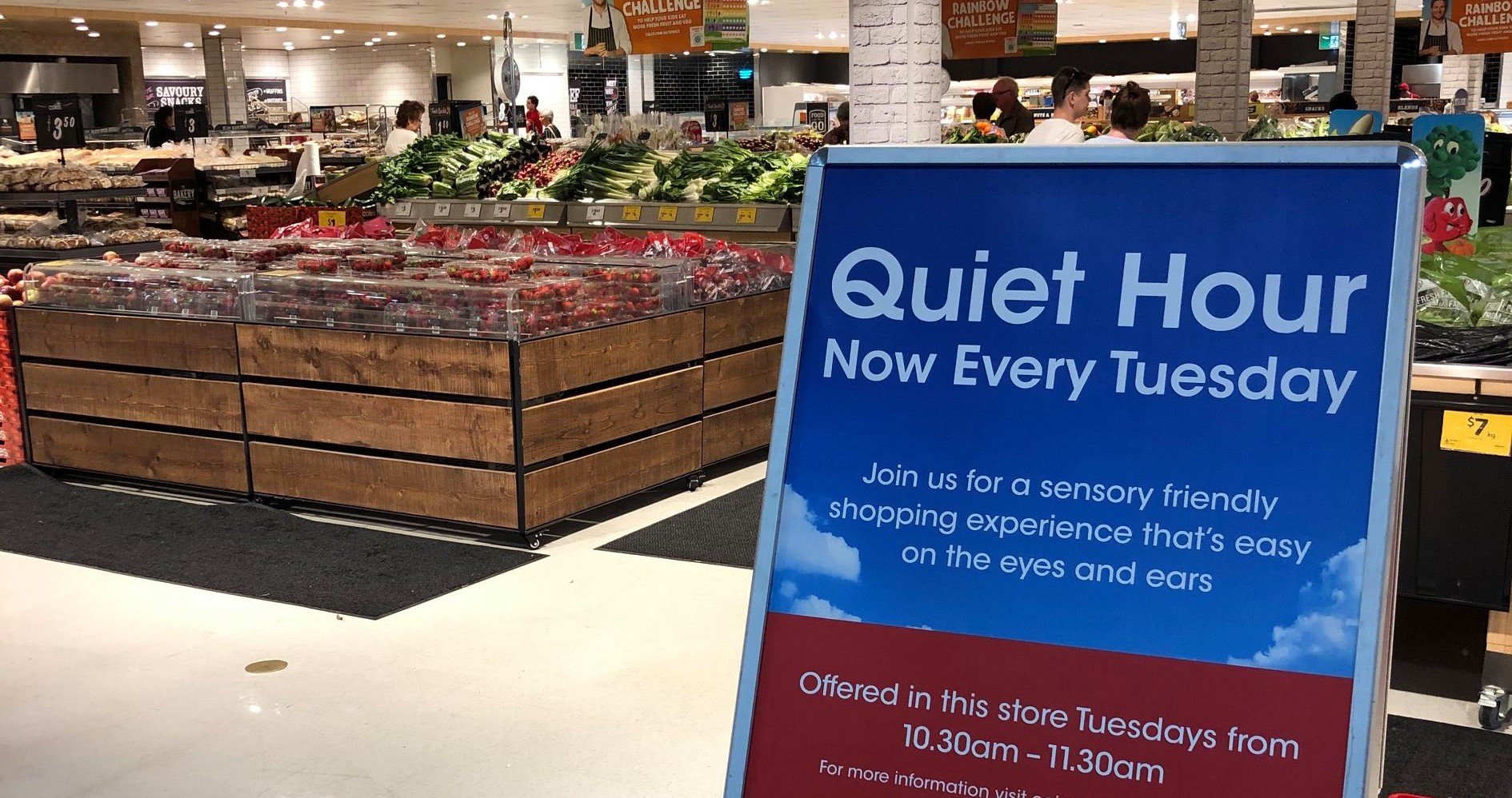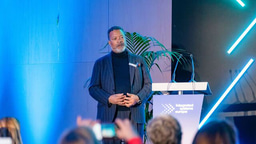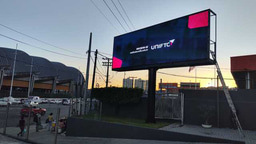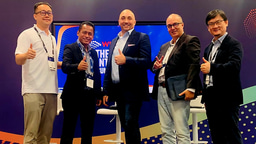Three Perspectives of Accessibility in AV Technology: An Essay on Context, Commitment, and User Diversity

Where do we include?
Spaces and Contexts of Accessibility True accessibility doesn't solely rely on technology, but on its effective implementation across various environments. The premise of "where we include" focuses on making everyday activities in work, education, commerce, and AV projects accessible, catering to people's diverse needs. Integrating advanced technological solutions must enable users, guaranteeing their accessible participation through information and communication.
In work and educational environments, AV technology is crucial for daily communication and collaboration. The challenge lies in adapting infrastructures and devices to meet high accessibility standards. Examples include subtitling in videos and real-time communications. In education, adjustable interactive screens benefit students of all ages and cognitive and sensory styles, fostering equity.
In cultural and transit spaces, accessible technology also extends to community and cultural projects. Museums and theaters utilize AV tools like screens with subtitles, audio descriptions, and high-contrast adjustments for individuals with visual or hearing disabilities. In public transport, audio assistance on trains and devices such as audible traffic lights and the "WeWalk" cane (integrating sensors, GPS, and auditory/haptic responses) enhance the autonomy and mobility of people with limited vision or hearing, a significant advancement from traditional tools like the white cane.
 Image from Coles Supermarkets (AU)
Image from Coles Supermarkets (AU)
In retail environments, signage technology designed for intense visual and sound immersion can inadvertently exclude some. To counteract this, the implementation of "silent hours" in supermarkets, featuring attenuated lighting and ambient noise, creates a friendly environment for individuals with sensory hypersensitivity, such as those with autism spectrum disorders. This highlights the importance of contextual adaptation of technology to create truly accessible and adaptable spaces.
In essence, "where we include" means transforming environments—offices, classrooms, supermarkets, cultural centers, and transportation—through the intelligent integration of adaptive audiovisual technology. This transforms technology into a bridge for information and active participation, by adjusting to the real needs of users. Examples such as accessible kiosks and "silent hours" in commercial spaces underscore the critical importance of attention to detail and context for genuine accessibility.
When do we include?
The Daily Attitude and the Commitment to Practice What We Preach in the AV Industry Accessibility transcends mere technology; it is an invitation to the AV industry to scrutinize and update its design paradigms. Historically, the AV industry has predominantly focused on image and sound. However, the evolution towards multisensory experiences, incorporating haptic feedback and vibrations, underscores that accessibility must be an ongoing daily practice, not merely a regulatory compliance.
The shift from multimedia to multisensory experiences brings an ethical responsibility: to design accessible projects for everyone, especially those with specific challenges who depend on these interactions for better accessibility. A fundamental aspect of "when we include" involves recognizing the internal diversity within work teams. When teams comprise individuals with motor, sensory, or cognitive challenges, accessibility becomes an inherent daily practice in the creative process, complementing audiovisual feedback with tactile responses, vibrations, haptic interfaces, and other applications. This transforms the AV industry's culture, ensuring that innovations break barriers and enrich the end-user experience.
 Image fromPexels by Ivan Samkov
Image fromPexels by Ivan Samkov
The AV industry bears the responsibility to lead by example, ensuring that its design processes, developed tools, and workspaces embody this philosophy. Practicing what is preached is not only an ethical imperative but also a crucial strategy for innovation and fostering more equitable environments. It is important to acknowledge long-standing, effective tools like JAWS (Job Access With Speech), NVDA (NonVisual Desktop Access), and even common adaptations like VoiceOver. Despite their proven utility, these tools are often underutilized, for instance, in self-service terminals or ATMs that include assistance for blind users, or even simpler applications like screen text readers on conventional desktop or laptop devices. Ultimately, "when we include" represents a continuous cycle of review, innovation, and adaptation, which must permeate every stage of the creative and operational process, recognizing that accessibility must be practiced internally and reflected in every solution developed.
Whom do we include?
Diversity of Users also means the less obvious Generational diversity. The perspective of "whom we include" broadens accessible technology to serve not only individuals with evident challenges but also the various generations coexisting in work, educational, or community settings, each with their unique frames of reference, preferences, and interaction styles. It is crucial to design with this broad diversity in mind to ensure our AV projects are truly accessible, allowing everyone to access information regardless of their age or cultural background.
 AI generated image.
AI generated image.
Each generation has engaged with distinct interfaces: the Silent Generation with text interfaces, Baby Boomers with graphical interfaces and the mouse, Generation X with keyboard shortcuts, Millennials with touchscreens, and Generation Z and Alpha with voice commands and AI assistants. Recognizing this evolution enables offering adjustable "modes of use"—from enriched text consoles to conversational assistants—allowing each person to interact with technology based on their background and comfort.
Modern adaptive tools and flexible platforms provide voice interactivity, subtitles, transcriptions, automatic meeting minutes, and configurable notifications, ensuring that the same system caters to the interaction styles inherited by different generations. Furthermore, it is crucial to consider symbolic interpretation and cultural context, as symbols are not universally understood and require contextualization to minimize misunderstandings.
Accessibility is integrated into hybrid spaces that merge the physical and digital, such as the digitization of whiteboards and touchscreens, and self-service kiosks offering various payment options, combining interfaces to provide autonomy for everyone. Even analog practices like manual note-taking are re-emerging and enhanced by AI, which can transcribe and summarize meetings, analyze participation, and complement manual notes. The integration of AI with analog methods, such as capturing whiteboard images with AI assistance to generate minutes, significantly boosts productivity and intergenerational accessibility.
Final thoughts
In conclusion, true technological accessibility lies in recognizing and responding to the rich tapestry of human diversity. By adapting interfaces, symbols, and functionalities to a wide spectrum of users, we create an ecosystem where technology facilitates communication and collaboration, rather than impeding it.
These three perspectives – where we include, when we include, and whom we include – are deeply interconnected. True accessibility is not a singular goal, but a continuous journey that demands a holistic approach. It's about designing technology that is adaptable to diverse environments, implementing accessibility as a daily practice within the industry, and recognizing the unique needs of every user, including the nuanced differences across generations. By embracing this comprehensive philosophy, the AV industry can truly leverage its potential to create a more accessible and participatory society.
-
Xchange Advocates are recognized AV/IT industry thought leaders and influencers. We invite you to connect with them and follow their activity across the community as they offer valuable insights and expertise while advocating for and building awareness of the AV industry.






Please sign in or register for FREE
If you are a registered user on AVIXA Xchange, please sign in